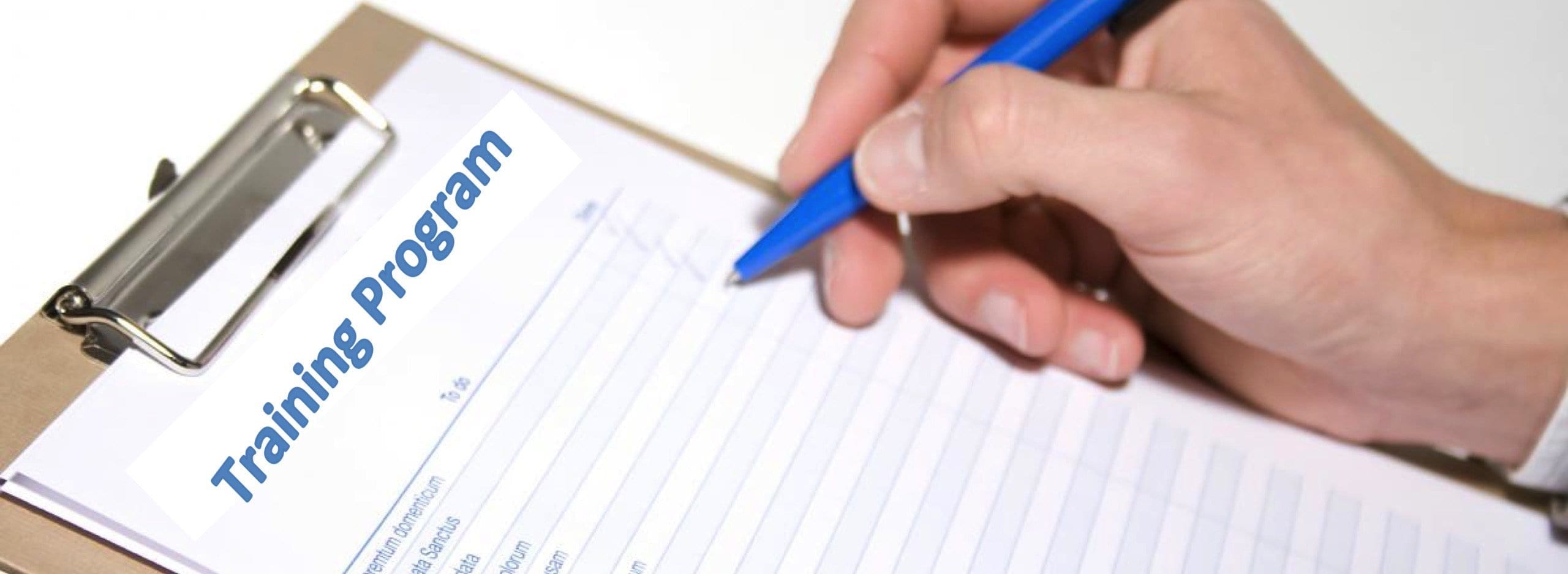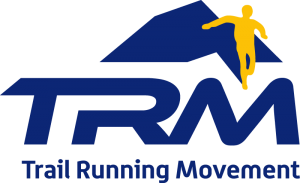Trail Running Training Programs

General tips for Trail Running
 Trail Running is a kind of sport that involves your whole body and, therefore, requires a good starting physiological shape, a muscle-articular structure well trained to withstand the stresses resulting from training and competing.
Trail Running is a kind of sport that involves your whole body and, therefore, requires a good starting physiological shape, a muscle-articular structure well trained to withstand the stresses resulting from training and competing.
In addition to the physical shape you need to develop a mindset able to deal with unpredicatable weather conditions and different trail tracks.
Indeed, unlike in road competitions, speed is just as important as the ability to overcome differences in height and trail track situations that may become even more complex with mud, rain, or snow.
Before starting a trail running training program is, therefore, advisable to plan a sport medical check-up, essential to assess the overall fitness shape including complete blood tests.
Finally, if until now you were occasionally practising activities like swimming, biking or jogging for less than 2 times a week, it is recommended to start with a soft approach to Trail Running to habit your body to run more days a week with continuity. Best cross training activities could be: alternation of walking / running in the long runs, running + swimming or cycling in summer or cross-country skiing or alpine skiing in winter.
Trail Runners beginners or athletes from other sports
 In the first approaching phase to Trail Running, the TRM Team suggests to you, above all, to become familiar with the natural environment, focusing on the time duration of the workout and the feelings, rather than measuring the distance. You should get used to the surroundings, discovering the sounds and smells of nature and concentrate on equilibrium, foot supports and the shoe grip on rough terrain.
In the first approaching phase to Trail Running, the TRM Team suggests to you, above all, to become familiar with the natural environment, focusing on the time duration of the workout and the feelings, rather than measuring the distance. You should get used to the surroundings, discovering the sounds and smells of nature and concentrate on equilibrium, foot supports and the shoe grip on rough terrain.
Since Trail Running races take place regardless the weather conditions, it is also important that you train to get habit to face different weather conditions, and to choose the appropriate clothing and equipment.
Have a look at our shop for all products related with trail running: TRM Shop
In the training schedule below we suggest a soft 4 weeks workout plan to approach Trail Running, theoretically adequate to a starting level.
1st Month
Week 1: Tue / Thu – 20/30 Minutes running (asphalt or gravel); Sat or Sun 1h on a trail track walking uphill, running slowly on the flat and downhill
Week 2: Tue / Thu – 30/35 Minutes running (asphalt or gravel); Sat or Sun 1:15 a.m. on a trail track walking uphill, running slowly on the flat and downhill
Week 3: Tue / Thu – 35/40 Minutes running (asphalt or gravel); Sat or Sun 1:30 a.m. on a trail track walking uphill, running slowly on the flat and downhill
Week 4: Tue / Thu – 40/45 Minutes running (asphalt or gravel); Sat or Sun 1:45 a.m. on a trail track walking uphill, running slowly on the flat and downhill
On your rest days you can plan 30 min. swimming or 1 hour of cycling at gentle pace.
2nd Month
From the 2nd Month, if you have done the workout properly and your body responded well to the adjustment period, you can start a new phase of the program that includes variations of pace, and short climbs. These workouts will replace the workout on Thursday.
Some examples to replace your workout on Thursday:
- Fartlek, run with pace variations on flat surface = 1 min Fast alternating to 1 min Slow to be repeated 8/10 times
- Progressive training on undulated surface = increase your running pace every 10-20-10-5 minutes up to a total of 45 minutes
- Short uphill = run 8×100 meters uphill increasing the pace, inclination 6%-8%, recovery by slow run downhill to starting point
For the 1st and 3rd week we suggest you choose the Fartlek session; in the 2nd and 4th week choose between the Progressive training and the Short uphill (For more information about correct execution please go to the Glossary)
Note: these workouts should be preceded by 10 minutes of slow running warm-up, stretching and 4 sprint runs of 10 sec.
The long runs on Saturday or Sunday should last for 2 hours – 2.30 am maximum.
3rd Month
At the beginning of the 3rd Month you will be able to start a preparation for a specific goal.
Athletes practising other sports and already well trained from a cardiovascular point of view, from the 3rd week of the 1st Month of Trail Running can add on Thursday one of the above workouts, and increase 30 minutes the Saturday / Sunday long run. Furthermore, we suggest them to add an additional training session on Friday starting from the 2nd month: a run at of 30 minutes at a slow pace followed by 7-8 sprint runs of 15 sec recovering by walking 45 sec in between.
If you have any doubt, or you aim for a personalized training program to improve faster your athletic performance and hit your goals, contact our TRM Coaches: info@trailrunningmovement.com
You can also have a look at our offer in terms of Trail Running Plans.
Expert Trail Runners or Marathon runners
 Who have already experienced Trail races and would like to progress to Ultra Trails or Endurance Trails.
Who have already experienced Trail races and would like to progress to Ultra Trails or Endurance Trails.
In this section we present a categorization of the different types of Trail Running Races highlighting the elements you should take in account when planning your training program.
The suggestions are a combination of the theoretical-scientific knowledge and experience of the TRM Team developed in several years.
We believe, however, that these tips are neither complete nor exhaustive ‘cause an Expert Trail Runner needs a personalized training program based on its psycho-physiological profile.
If you need more information please contact us directly. You can also decide to book for a Trail Running Advanced Course, a TRM Stage organized in the mountains or ask for a personalized training program. Book a call with a TRM Coach
Short Trails – up to 45 km
 This type of race is undoubtedly the most popular and the first to be included in the annual planning of a Trail Runner. Short Trails are attended by all types of Trailers: beginners but also by more experienced trail runners; élite athletes specialists of the distance and those who plan a short trail race to test preparation for an ultra trail. Short Trails go from a distance of 10 km up to 45 km. The energetic system activated in these kind of competitions is the Aerobic system (SA) and, partially, the Anaerobic Alactacid (SAL). In these races is primarily required the use of glucose and, therefore, we suggest an in-race alimentation based on energy drinks and power gels. It is not necessary, nor advisable, to ingest solid foods.
This type of race is undoubtedly the most popular and the first to be included in the annual planning of a Trail Runner. Short Trails are attended by all types of Trailers: beginners but also by more experienced trail runners; élite athletes specialists of the distance and those who plan a short trail race to test preparation for an ultra trail. Short Trails go from a distance of 10 km up to 45 km. The energetic system activated in these kind of competitions is the Aerobic system (SA) and, partially, the Anaerobic Alactacid (SAL). In these races is primarily required the use of glucose and, therefore, we suggest an in-race alimentation based on energy drinks and power gels. It is not necessary, nor advisable, to ingest solid foods.
What you should focus your training sessions on:
- maximum aerobic speed to be a good runner in the flat and undulating sections (VO2max, anaerobic threshold)
- build core muscle strength to be able to run in the uphill sections, when possible (strengthening the lower limbs)
- downhill speed working to develop the proprioceptive ability and the equilibrium (exercises to develop general and peripheral coordination).
The time period required for the long runs on Saturday or Sunday will be between 2 and 4 h. The minimum number of weekly training session ranges from 3 to 4 times according to competition goals.
Have a look at the: TRM Plan 45K
Short Snow Trails – 15 to 30 km
 Snow Trails are still few in number. They are mainly organized at ski areas, often on the beaten paths of cross country skiing and with low drops. Running on the snow, very similar to that on the sand, needs a physical preparation equally demanding than the Short Trail. It adds the complexity of managing unstable feet supports – that solicit heavily ankles and knees – and sub-zero temperatures. Those who want to take part to this kind of competition, should not suffer from joint, tendon or muscle pains and be aware that they must have already faced Trails on mud or sandy tracks.
Snow Trails are still few in number. They are mainly organized at ski areas, often on the beaten paths of cross country skiing and with low drops. Running on the snow, very similar to that on the sand, needs a physical preparation equally demanding than the Short Trail. It adds the complexity of managing unstable feet supports – that solicit heavily ankles and knees – and sub-zero temperatures. Those who want to take part to this kind of competition, should not suffer from joint, tendon or muscle pains and be aware that they must have already faced Trails on mud or sandy tracks.
What to add to your training for Short Trail:
- strengthening the joints of the lower limbs
- ability to run with freezing temperatures
- ability to manage running on slippery and unstable tracks (soft snow or ice)
To improve the feet support and increase stability TRM Team suggests you to buy a pair of “snow chains” to be placed under your trail running shoes.
Medium Distance Trails – 45 to 80 km
 Competitions above 45 km require additional skills to those already listed for Short Trails. The training program is aimed to reduce the heart pace, increase the stroke volume and muscle and joints flexibility. More generally, you need to develop the so-called endurance, i.e. the ability to withstand prolonged physical and mental efforts. The main energetic metabolism is the Aerobic. You should also carefully plan what to eat during long runs and competitions to avoid possible situations of hyperglycaemia, often caused by prolonged and excessive use of saccharides.
Competitions above 45 km require additional skills to those already listed for Short Trails. The training program is aimed to reduce the heart pace, increase the stroke volume and muscle and joints flexibility. More generally, you need to develop the so-called endurance, i.e. the ability to withstand prolonged physical and mental efforts. The main energetic metabolism is the Aerobic. You should also carefully plan what to eat during long runs and competitions to avoid possible situations of hyperglycaemia, often caused by prolonged and excessive use of saccharides.
What you need to train on in addition to shorter trails:
- Lipid power, namely the improvement of the use of fatty acids as an energy source
- physical resistance to prolonged and repetitive stress (endurance)
- management of solid alimentation and complementary hydration
- development of mental strength to get used to invoke positive images in case of difficulty and during crisis management
- competition planning
Furthermore, these kind of competitions require „availability of time“ for your long runs planned for Saturday or Sunday, between 6 and 10 h consecutive. You need to train 4 to 5 days per week, up to 6-7 days during the competitive period for those who have performance goals in mind. It is important to pay adequate attention to the recovery time and rest days.
Have a look at the: TRM Plan 80K
Ultra Trail: 80 to 170 km (100 miles)
There are several competitions that start from 80 km upward, falling in this category, very difficult to outline as the competitions and the duration varies depending on the height of the Mountains, type of mountains (Alps or Apennines), technicality of trail tracks.
competitions that start from 80 km upward, falling in this category, very difficult to outline as the competitions and the duration varies depending on the height of the Mountains, type of mountains (Alps or Apennines), technicality of trail tracks.
An Ultra Trail requires an annual meticulous preparation to be undertaken with a program tailored on the specific Trail Runner physical and psychological profile and bearing in mind the context in which he live, the family entourage and the professional commitments.
The most famous European competition is undoubtedly the Ultra Trail around Mont Blanc, a race 168 km long with 9.600m. D + to be completed within 45 h.
Compared to the previous Short to Medium distance Trails, you need to integrate your program with:
- a very high volume of training to develop the adequate endurance ability to stay on the legs for several hours and in some cases days
- exercises focused on alternating running and walking, also useful to understand at what point it is more effective to choose one of the two gaits
- at least one night run to understand how to manage the environment that presents itself through a different point of view (duration min. 8h)
- training under heavy complex atmospheric conditions – storms, blizzards, heat, fog – in natural contexts similar to those of the goal race
- training runs over 2.000 mt of altitude to test the reactions against the progressive oxygen reduction
- alimentation tests during your “long runs” alternating solids to liquids and all kind of aliments same as the ones you intend to use for the race
- mental training useful to be able to properly handle the inevitable fatigue, physical problems and moments of strong demotivation
The „long training runs“ should range from 10-12 hours, for Ultra Trails up to 120 km, to consecutive days for longer Trails, in which it might be useful to sleep at altitude, in mountain refuges, to get used to the altitude.
The training days will go up to 6 per week. If you have performance objectives, in the special preparatory period you should increase you training frequency to 7/7 days and, in the peak period, we suggest to add at least 1 or 2 of bi-daily workout per week.
Have a look at the TRM Plan 120K
Have a look at the: TRM Plan 170K
Endurance Trail: > 170 km up to 330km (100, 200 miles …)
 The term Endurance is not an adjective universally shared and recognized by the International Trailers Community, however, it is frequently used to classify the races exceeding 200km, requiring an extraordinary psycho-physical attitude, and a personal capability to manage several days and nights running and walking up and down Mountains.
The term Endurance is not an adjective universally shared and recognized by the International Trailers Community, however, it is frequently used to classify the races exceeding 200km, requiring an extraordinary psycho-physical attitude, and a personal capability to manage several days and nights running and walking up and down Mountains.
In this category you can find races that require total self-sufficiency and orientation, as the Petit Trotte à Léon, or competitions that provide to participants “Life bases” as the Tor Des Geants.
The training program for competitions like the Tor Des Geants start from a careful analysis of the difficulties you might find on your route and how you can get prepared to deal with them.
But at the very first you should decide your goal. Is your goal to get to the finish line or to compete?
The approach to a training program for endurance trails is completly different from any other race.
The primary objective for all Trailers should be to conclude the race in good health, minimizing injuries (taken for granted by the majority of participants).
The TRM Team has been able to demonstrate that, even without the assistance of a Professional Team as that used by the Elite Trail Runners, it is possible to bit the goal and become a finisher of the Tor des Geants. Thanks to a gradual approach, a scientific periodization of the training and programming the macro, meso and micro cycles this happened in a period of 5 years.
In the Endurance Trails like the Tor des Geants the energetic metabolism needed is almost exclusively the Aerobic part.
The training program should propose a wide variety of exercises to which you should add the mental training in order to develop a capability called Resilience. Unlike most of endurance races, the Tor des Geants does not require, at the time, previous experience for partecipants. Although we strongly advise trail runners to choose the TDG having first completed a 170km (100 miles) Ultra Trail.
There are some questions you should ask yourself before deciding to get ready for the Tor des Geants:
- I will be motivated to prepare for a consecutive year for this appointment, sacrificing summer holidays and training up to 6 days per week and more?
- My family, my friends will follow me and support me before and during the race?
- I have someone who can assist me during the days of the race?
- I am ready to face the risk of injury, medical expenses necessary and a long interruption of training later in case I did not prepare adequately?
If you positively answered to all above questions and you feel ready to face this challenge, the TRM Team is the best choice you have in order to reach your goal: become a “Giant” trailer.
Have a look at the: TRM Plan 330K
Strengthening exercises with and without weights
Strengthening exercises increase muscle strength and, therefore, will help you to run harder and longer and to prevent injuries.
Muscle strength exercises determine an increase of:
- the size of the muscle fiber
- the contractile force of the muscle
- the strength of the ligaments, tendons and bones.
If you do not have physical problems, in order to increase the effectiveness, you can decide to do some exercises with weights, otherwise avoid load.
However, the first 1-3 times you train with weights it is better to keep the load light and do more reps. When your body gets used tot he exercises you will increase weight and reduce the repetitions.
The strengthening work must be programmed in the training plan depending on the scheduled competitions and the athlete profile.
For a workout plan that includes exercises to strengthen write to info@trailrunningmovent.com.
Some examples of exercises to be customized:
Arms:
Hold the weights and bring them to the height of the arms, then stretch the arms upward.
Start with 3 sets of 10 rec 30 sec. Weight 500g – 1kg
Legs:
- Squat (bending). Place the barbell on your shoulders, bend slowly to squat while keeping the knee angle of 90 °. Return to the starting position exhaling.
Start with 3 sets of 15 recovery 1 min. weight 5-10kg
- Crunch (abs). Lie down on the floor with your legs bent and hands behind his head, shoulders and torso lift inhaling bringing the forehead as close as possible to the knees. Maintain position 5 sec. and return to the starting position exhaling.
Without weights 3 sets of 20 repetitions with slow rec 1 min
- Leg Curl (bending of the legs). Relax on the machine (it is present in almost all gyms), bend your legs to your back exhaling. Hold for 1 sec. and return to the starting position.
Start with 3 sets of 15 rec 1 min. weight 5-10kg
- Leg Extension (leg extension). While seated on the appropriate machine, fully extend your legs forward. Hold for 1 sec. and then return to the starting point. During the exercise grasping the knobs on the sides of the machine to maintain the correct position of the torso. Free breathing.
Start with 3 sets of 15 rec 1 min. Weight 5-10kg. Exercise not recommended for those with knee problems.
Always precede the exercises from 10 minutes of heating slow running and stretching.





